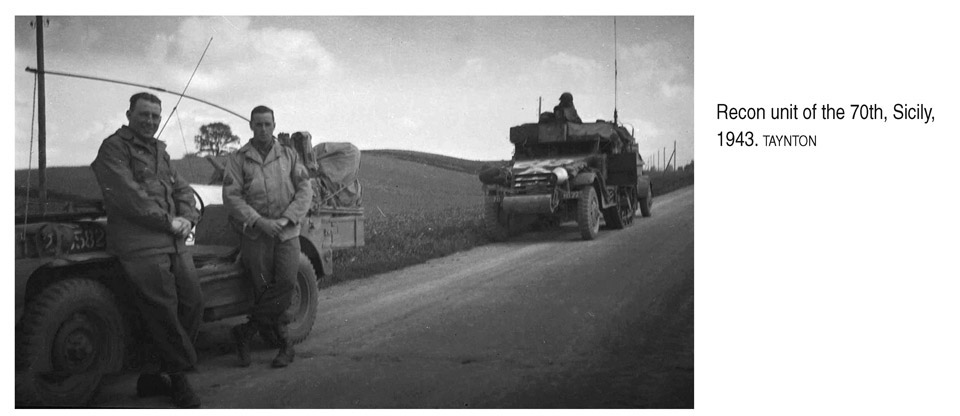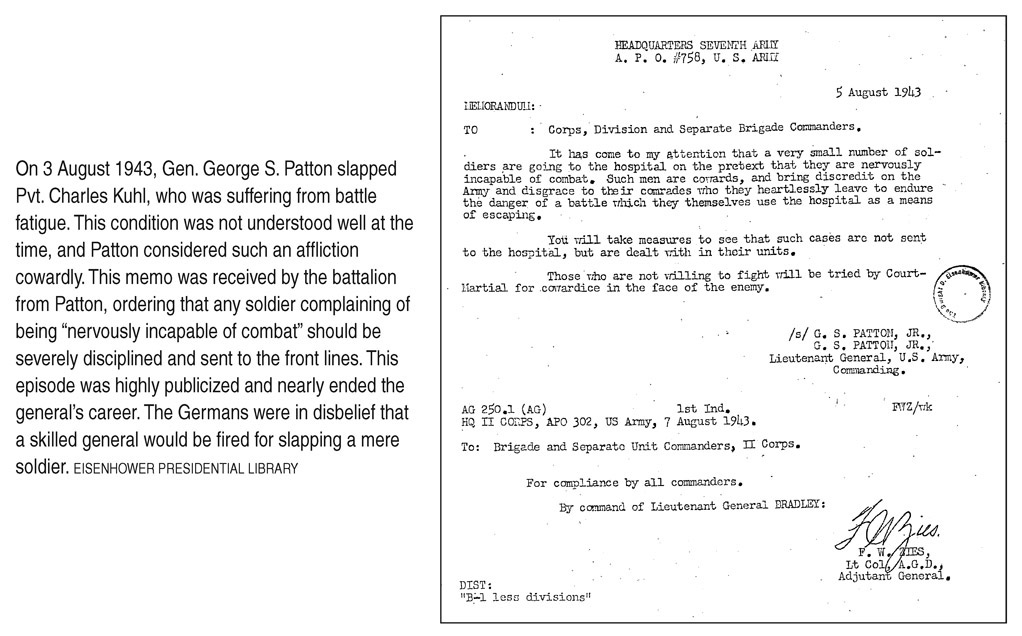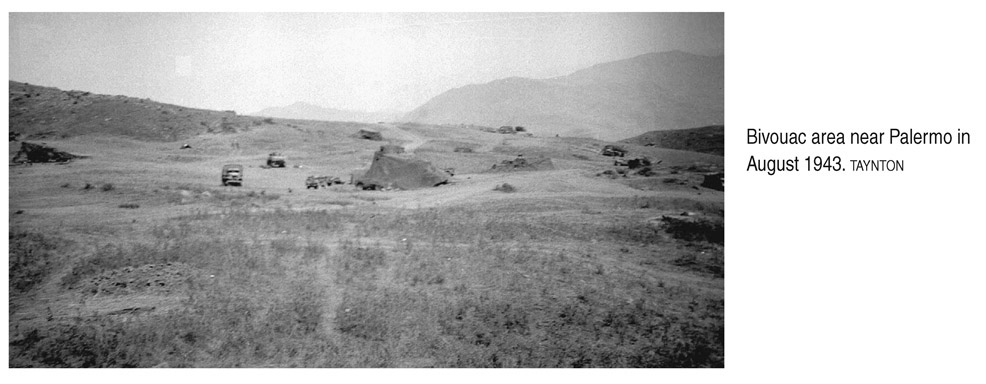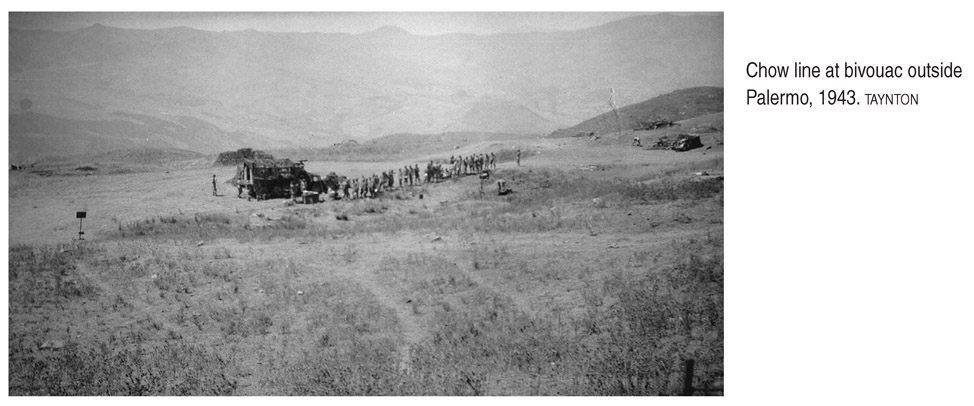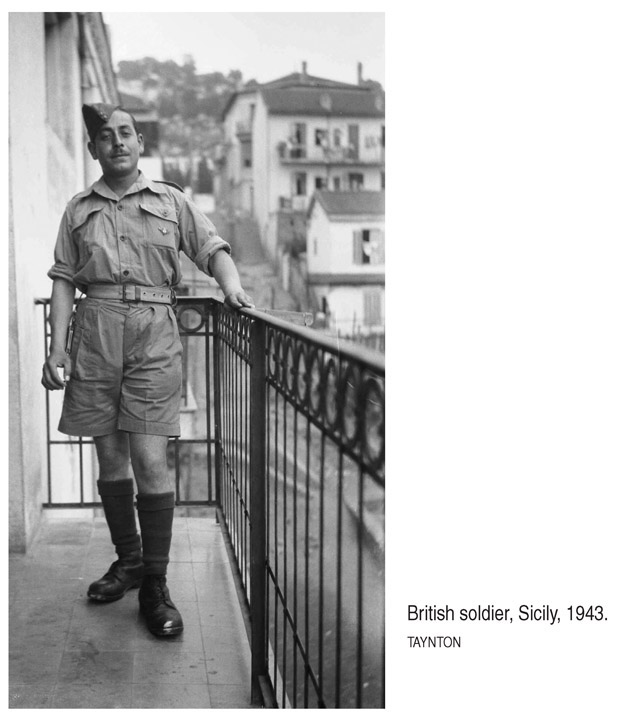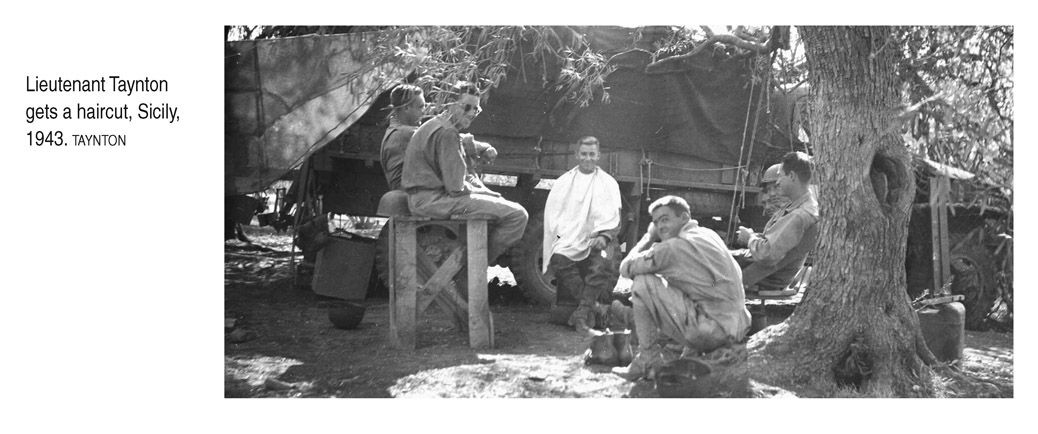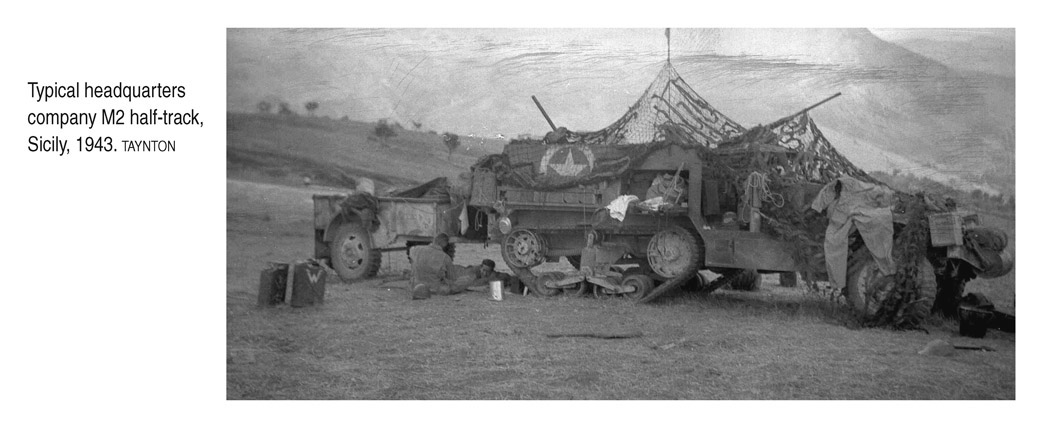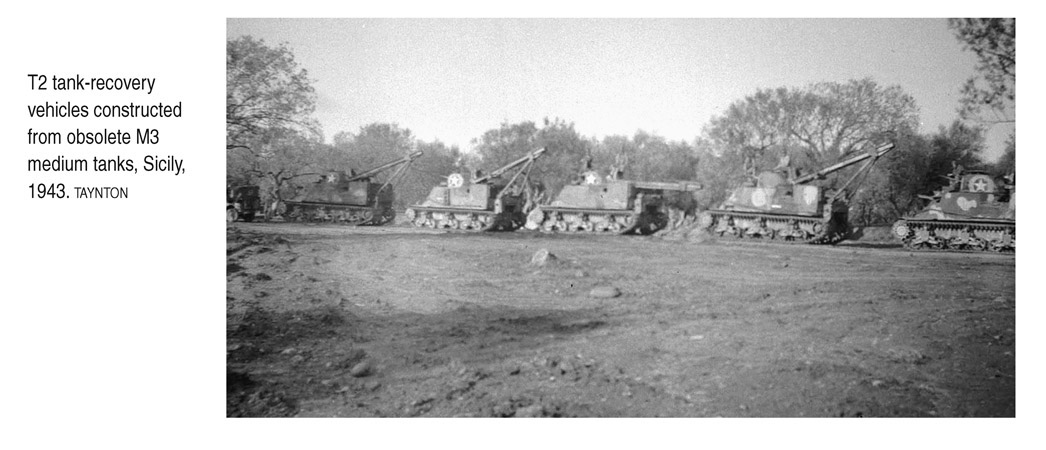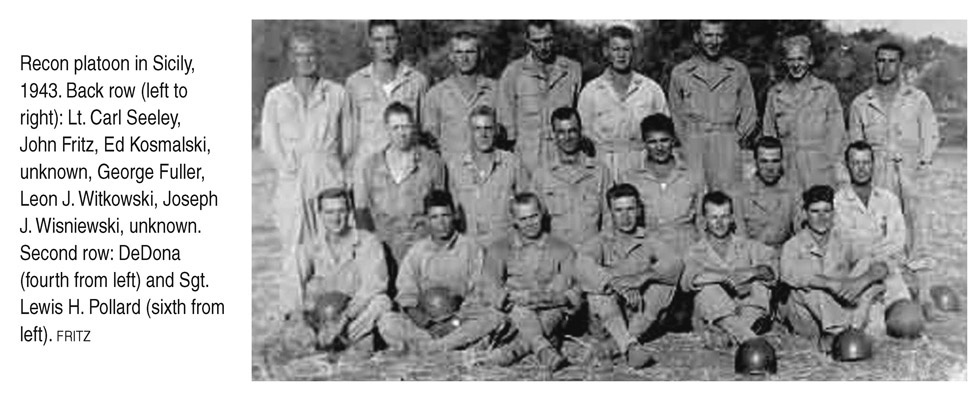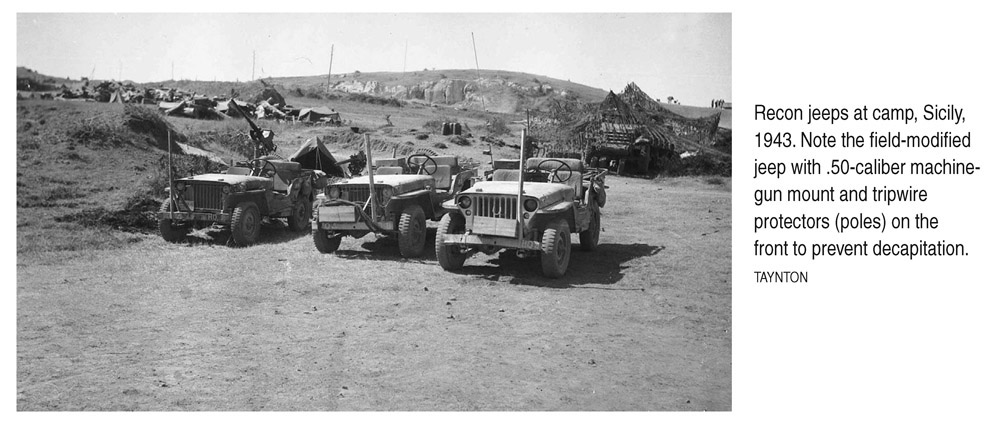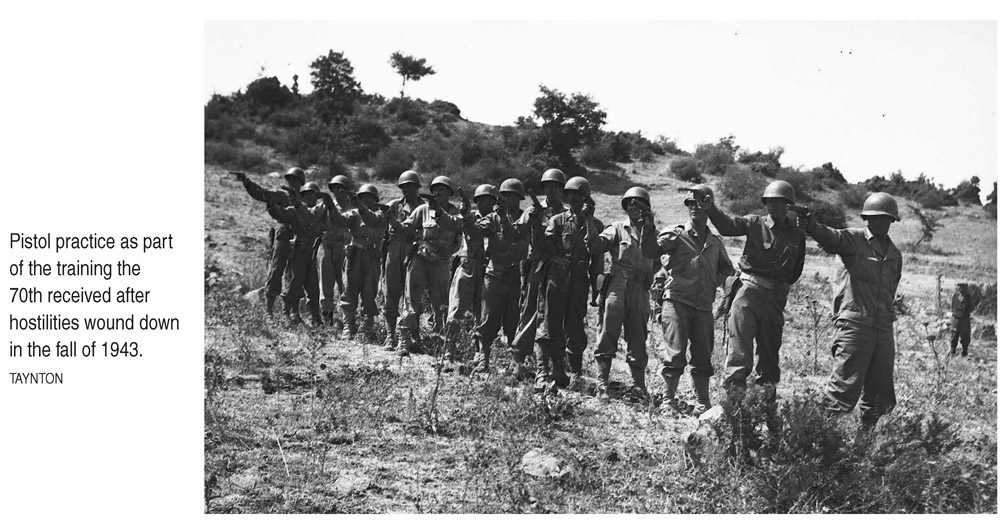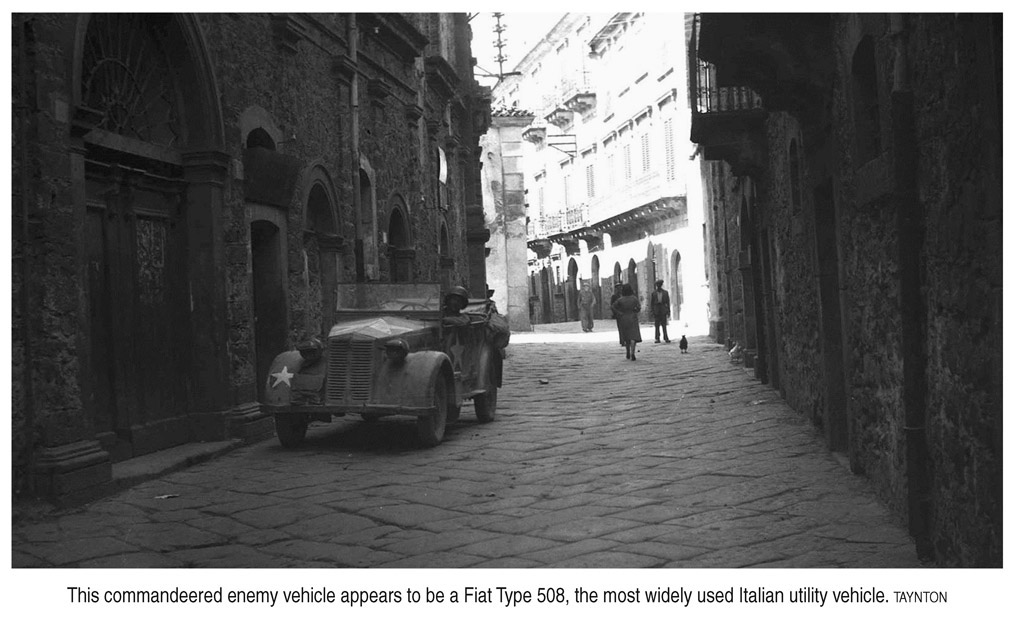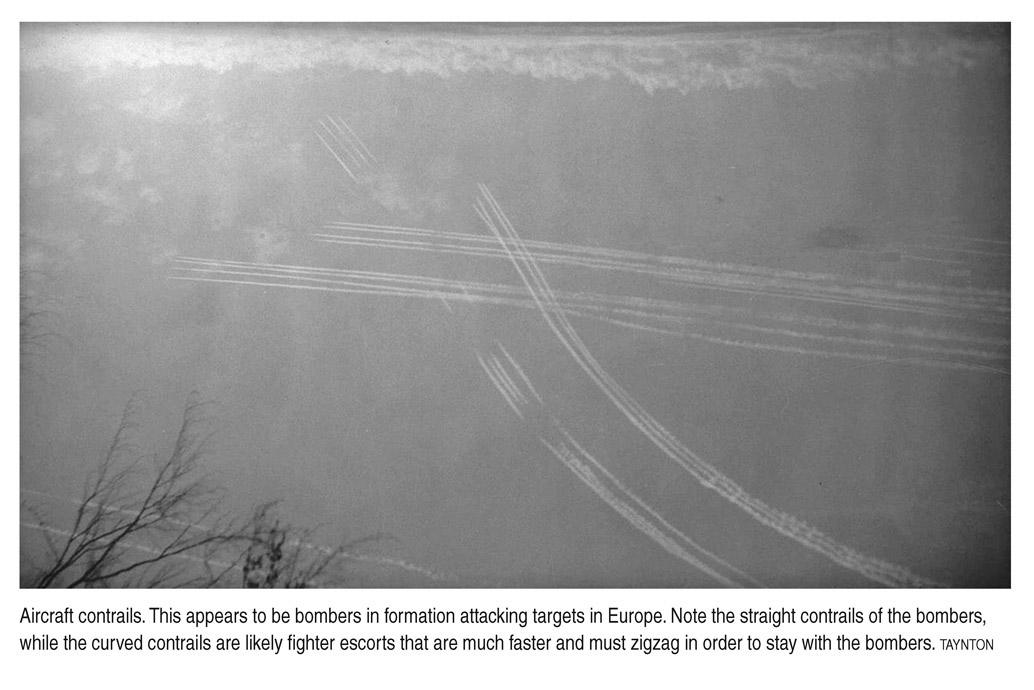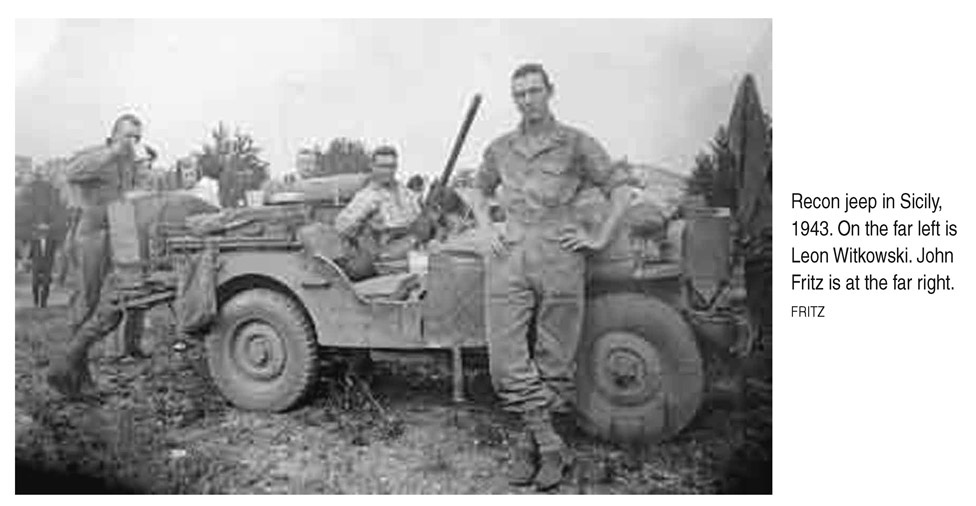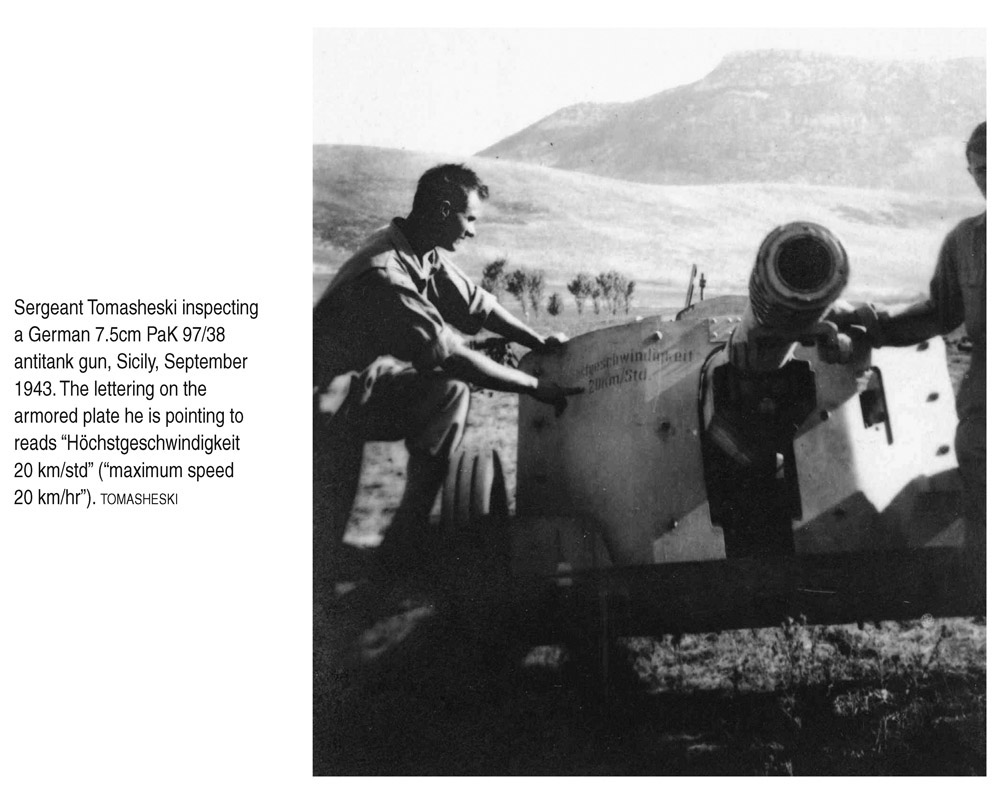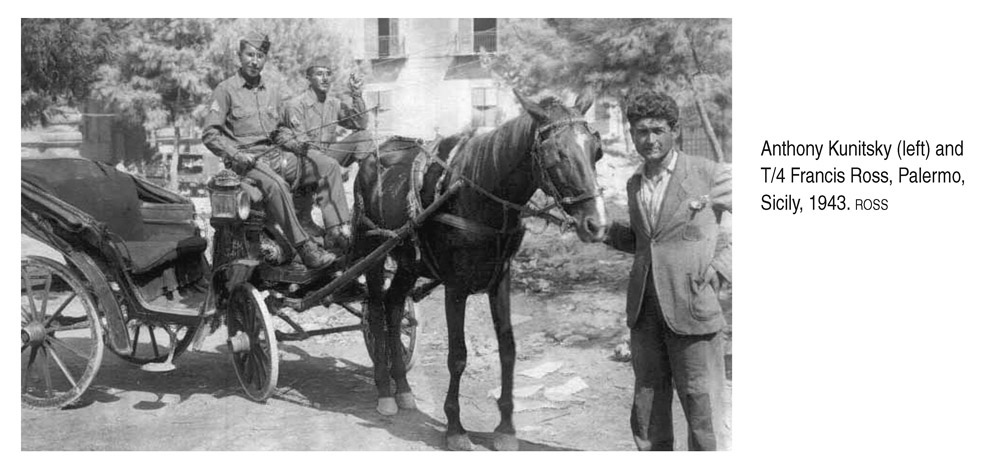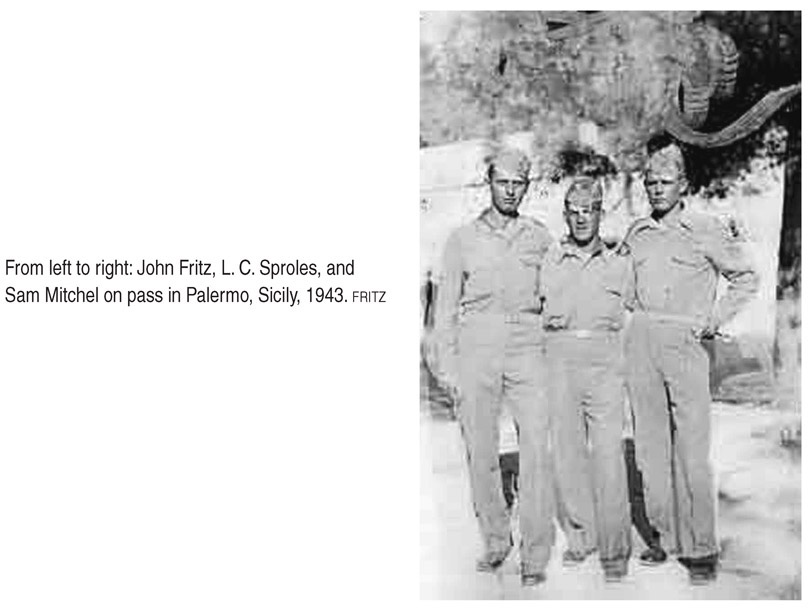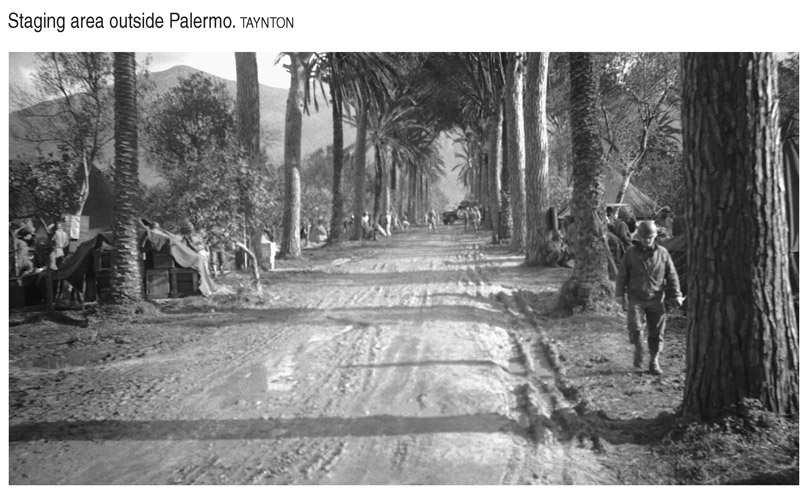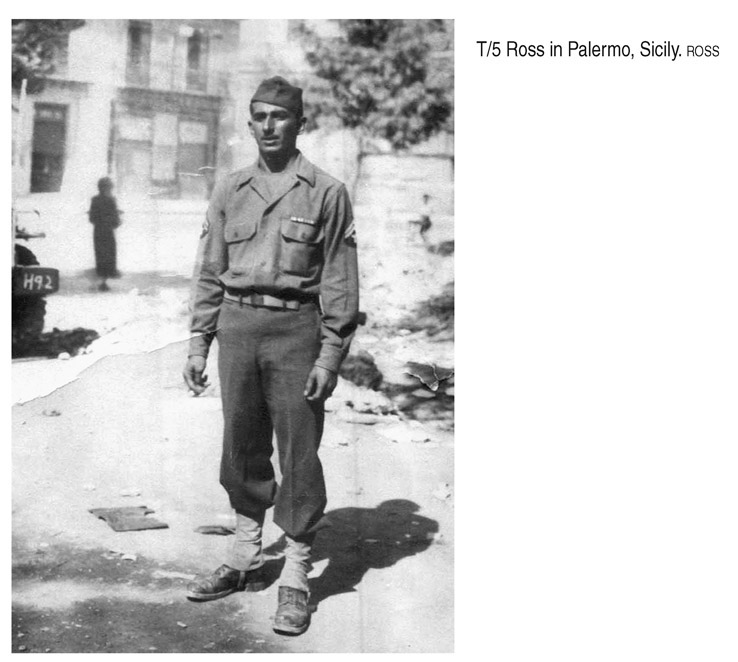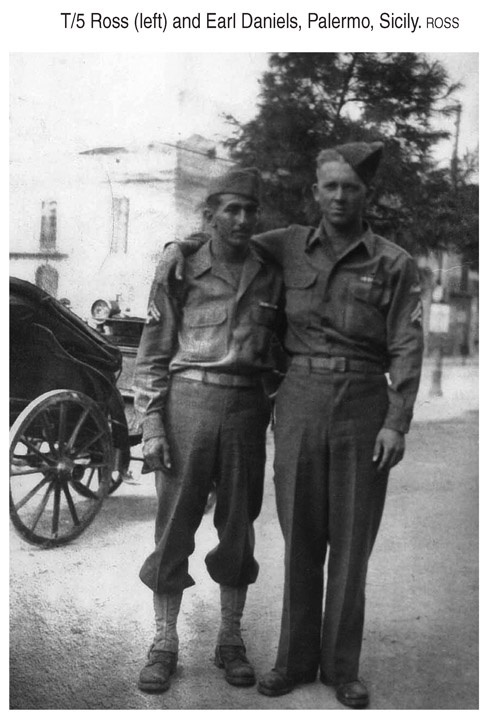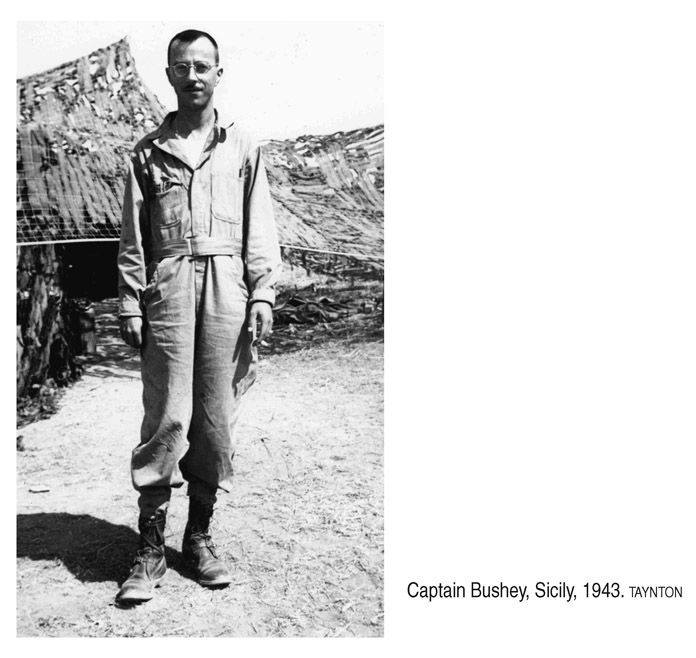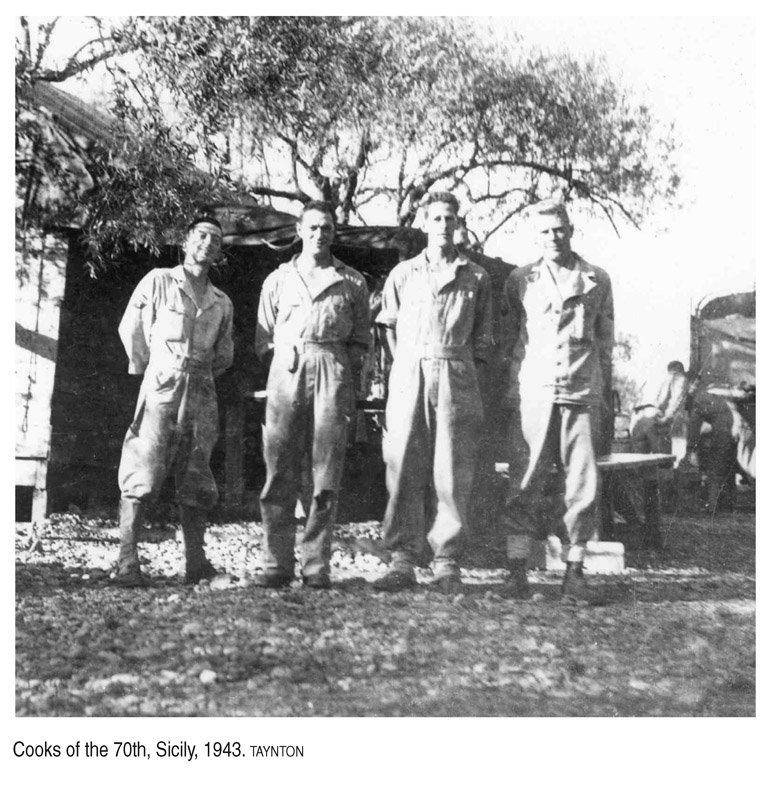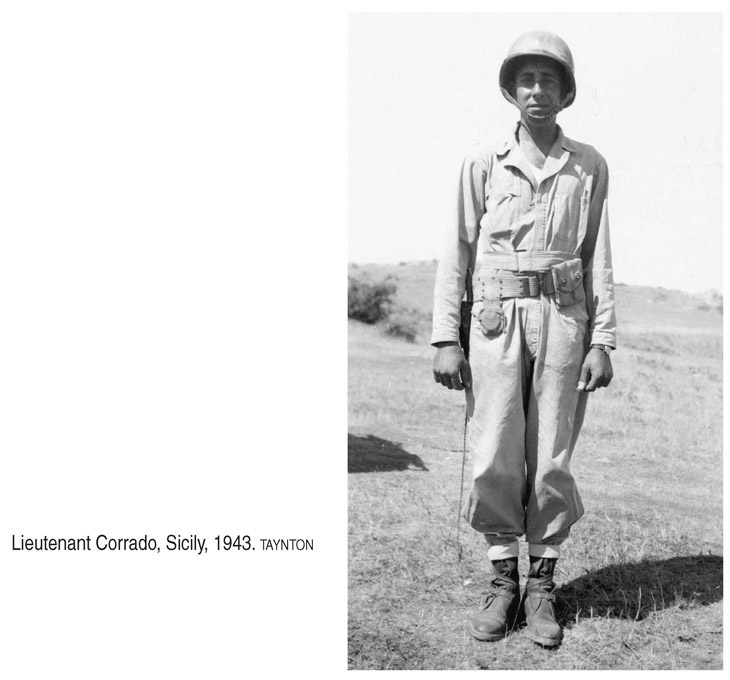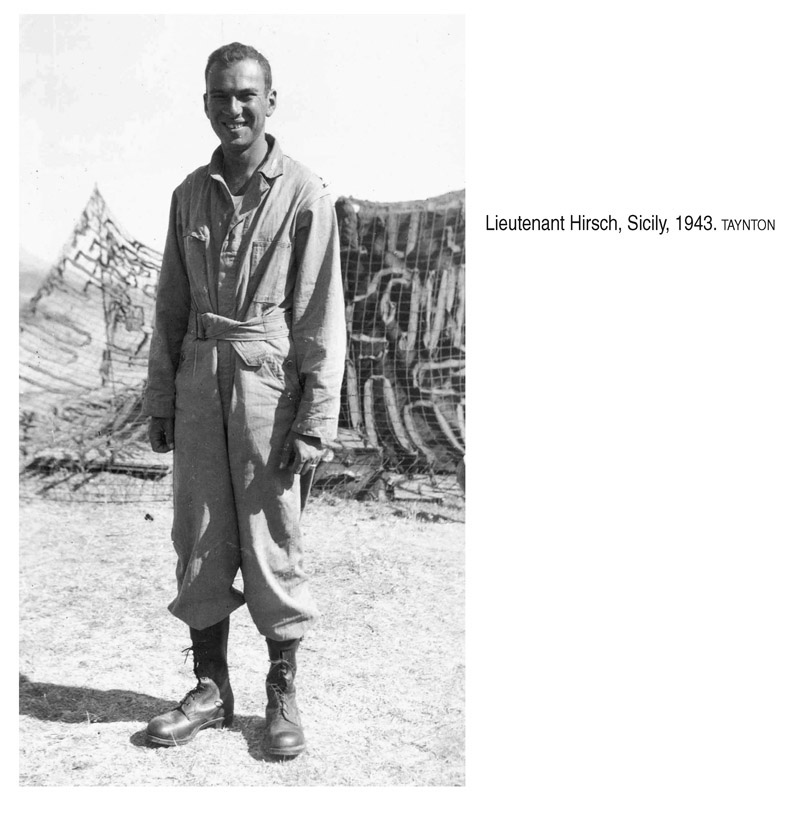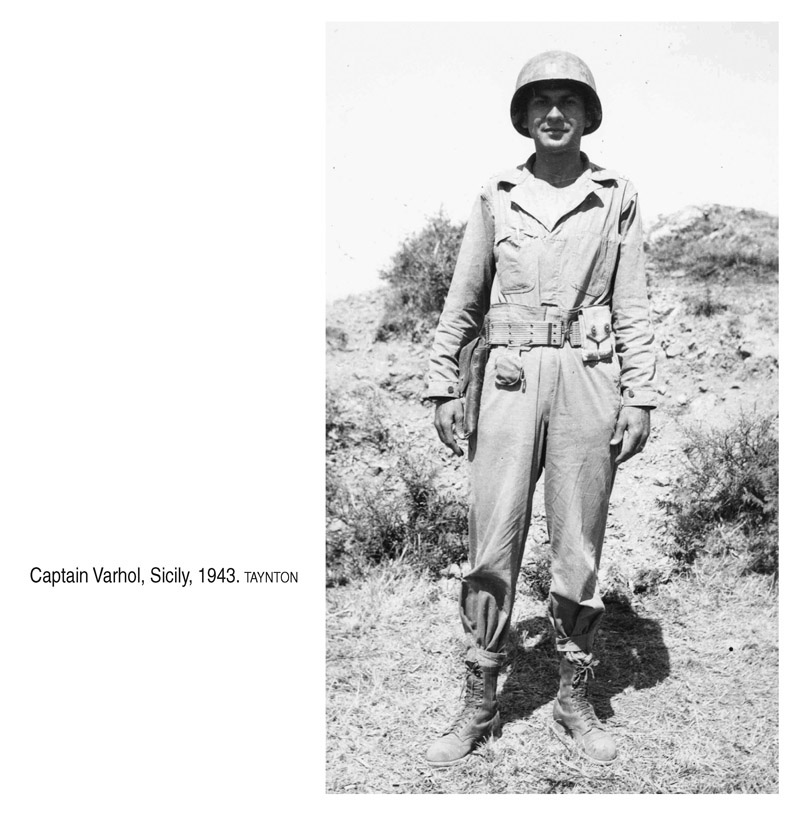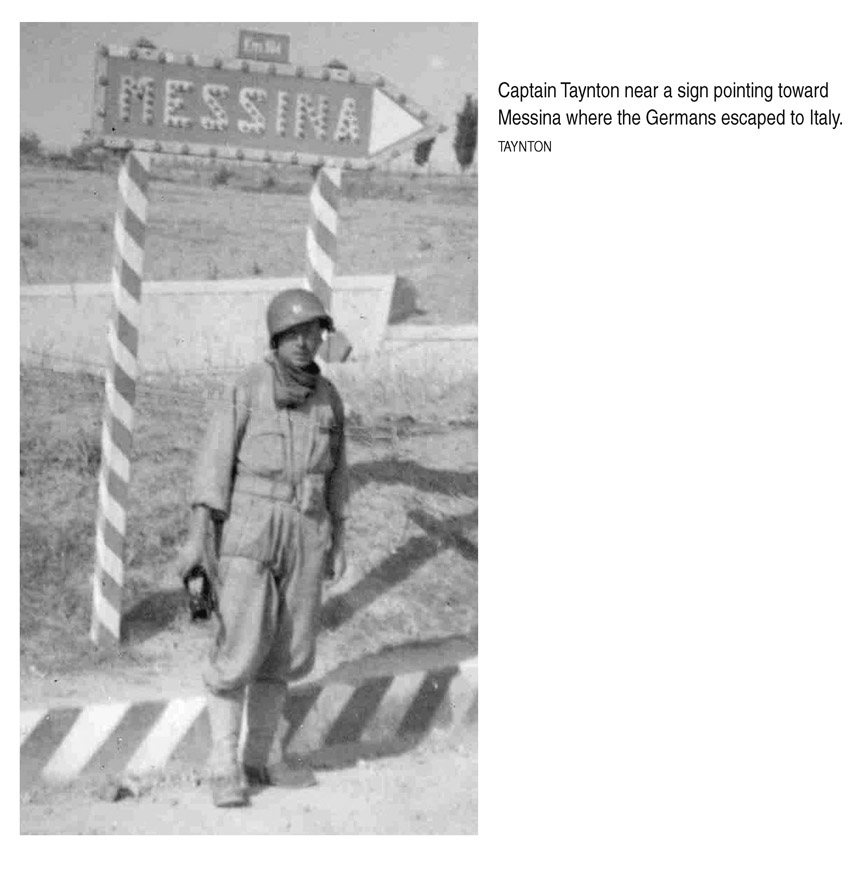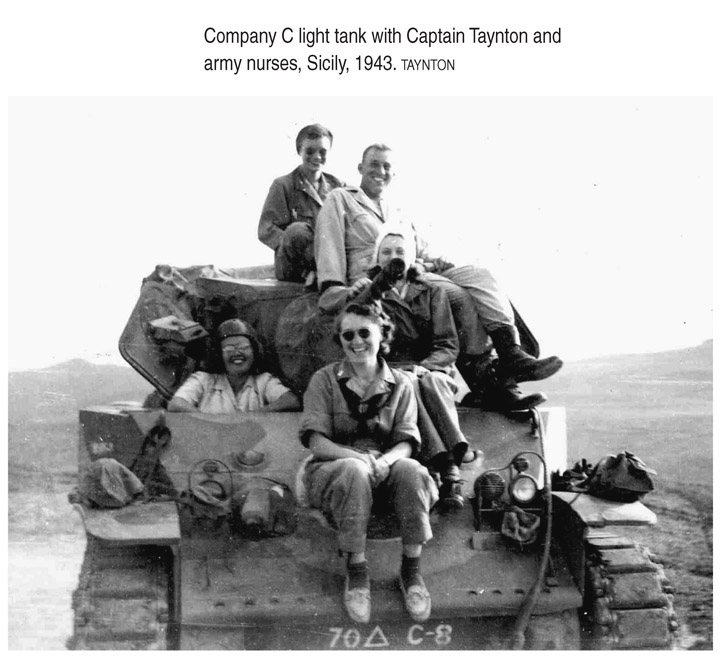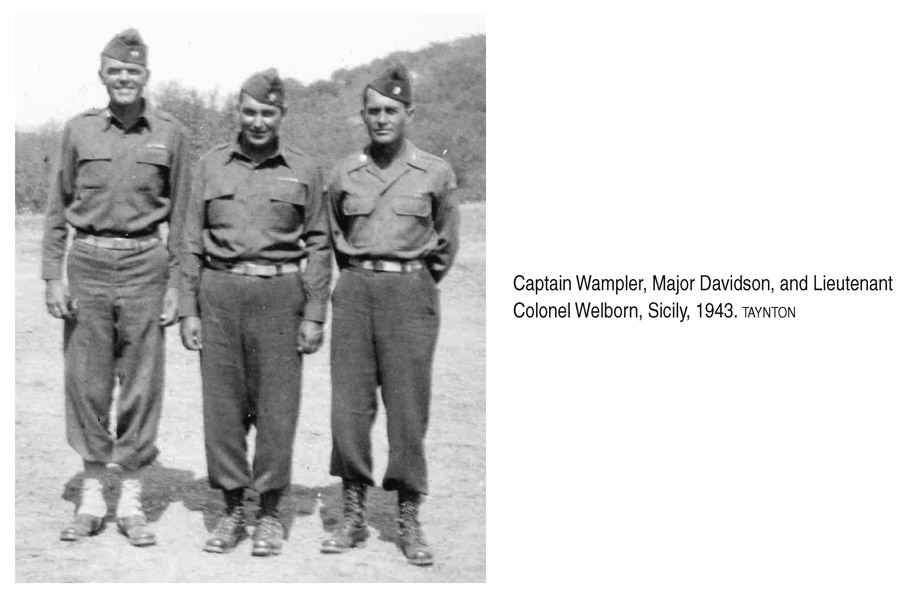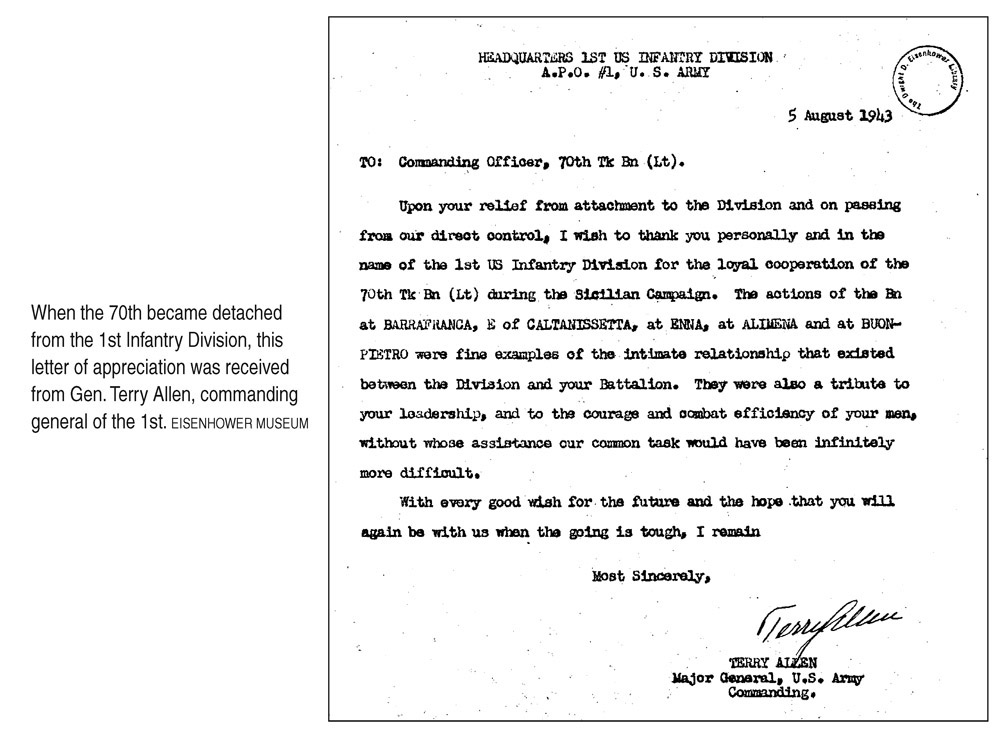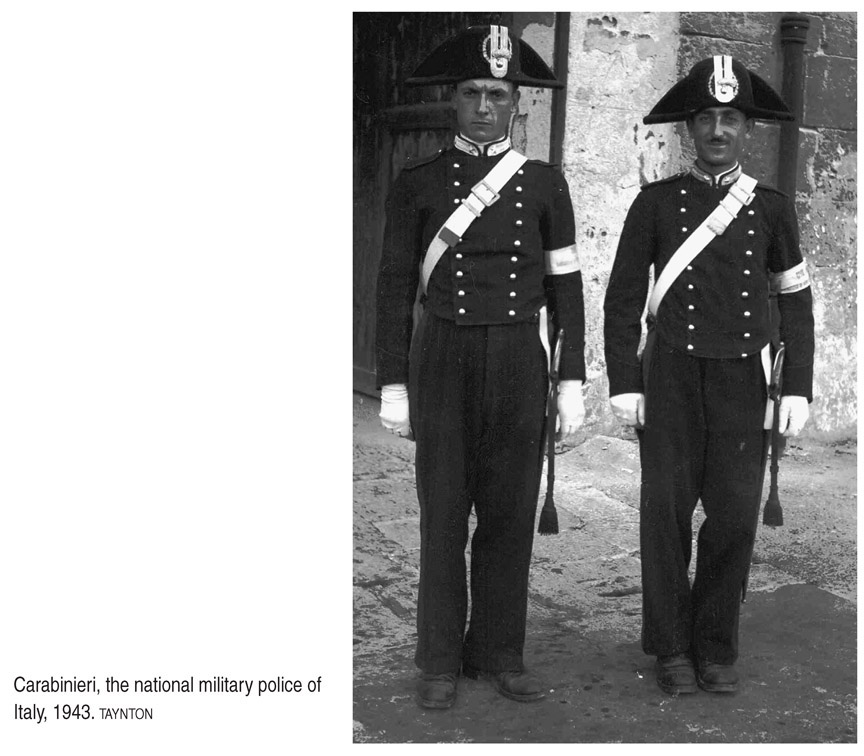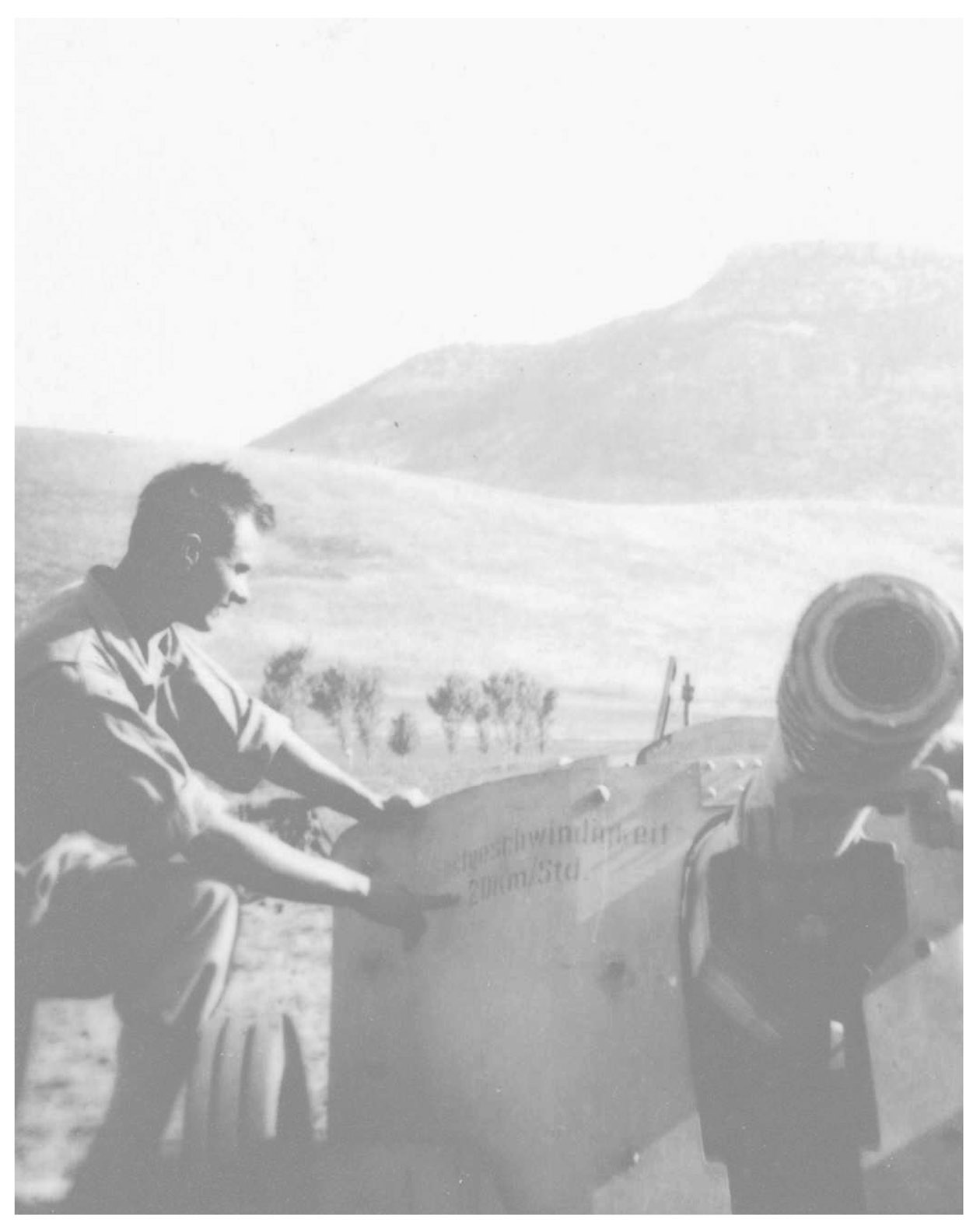

CHAPTER 3
The Operation Husky battle plan called for landing the British Eighth Army (Montgomery) near Syracuse and the Seventh Army (Patton), of which the 70th was part, near Gela. The 70th was together for the first time since debarkation from the United States, and was attached to the 1st Infantry Division, the “Big Red One.” An advance party commanded by Captain Wampler on 10 July 1943 acted as a guide for the rest of the battalion that landed between 13 and 15 July. The battalion staff and thirty-five enlisted men landed at Gela on 13 July and proceeded on Highway 115 out of the city. The battalion continued along a winding road through war debris consisting of burned vehicles, landing craft, and supplies to the bivouac 4 miles north of Gela. There was considerable activity on the beach where landing craft shuttled supplies, equipment, and munitions. From 14 to 15 July the tanks came ashore, fording kits were removed, and the tanks were made ready for battle. The battalion strength was forty-five tanks, three assault guns (T30 75mm howitzer motor carriage), three mortar half-tracks, and other assorted half-tracks.
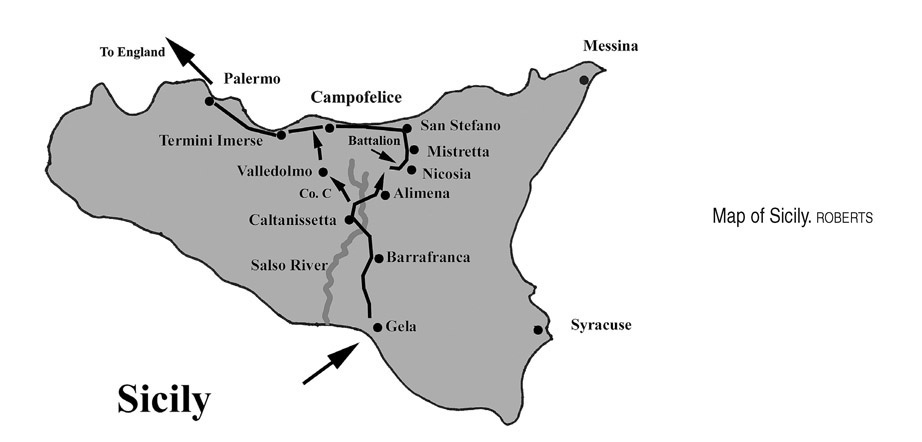
For the first time as a complete battalion, the 70th was ordered to secure the high ground northeast of Barrafranca, supporting the 26th Infantry Regiment. The M5 light tanks and T30 75mm pack howitzer motor carriages were used in the attack, which started on the morning of 16 July. Companies B and C were in a flank formation, with Company A in reserve with the assault-gun platoon in support. As the flank advanced, the 70th was forced to use the roads because the terrain was not suitable for tanks. The Germans opened up on the road, having zeroed in their weapons prior to the attack. The troops withdrew to the jumping-off point, which was immediately attacked by sixteen German panzer IV tanks that were not supposed to be in the vicinity, according to G-2. Lieutenant Colonel Welborn immediately withdrew the 70th tanks to high ground surrounding the road and directed fire with the 37mm guns onto the lightly armored tops of the German tanks, knocking out five of them and halting the attack. That afternoon, they resumed the attack on Barrafranca. The road had been mined, causing tanks to detour off road, a difficult task due to the terrain. About an hour after starting the second attack, they captured and secured the town. The 26th Infantry Regiment occupied Barrafranca, while the 70th moved to the bivouac area nearby.
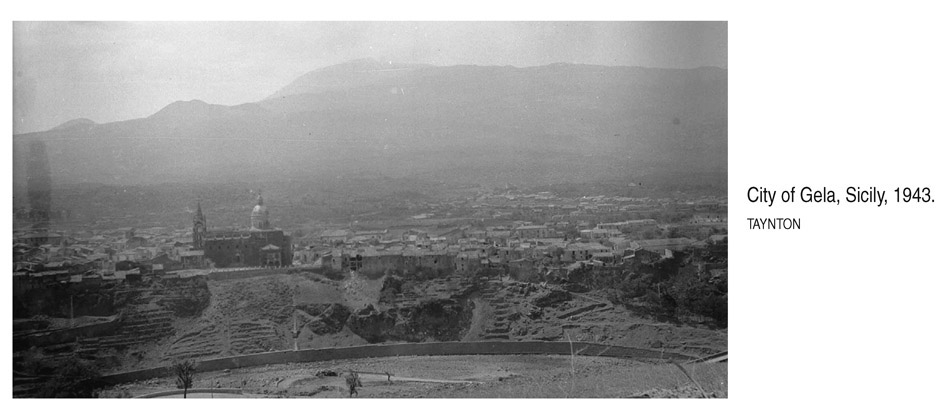
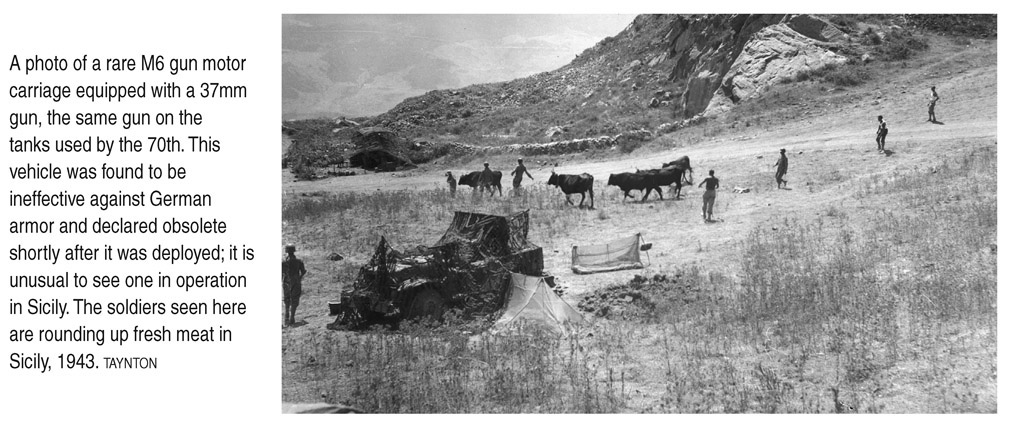

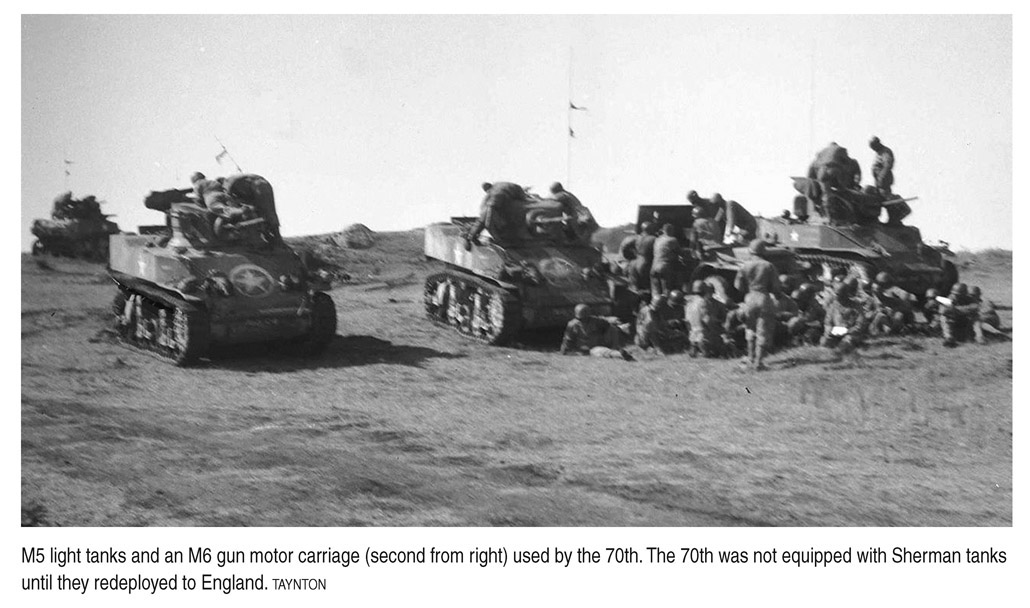
The 70th started the battle with forty-five M5 light tanks, three assault-gun half-tracks, and three mortar half-tracks. Two tanks were destroyed and eight disabled. One half-track lost its track but was able to drive back on the front-wheel drive, rolling on the road wheels.
Orders were received from Gen. Theodore Roosevelt Jr., 1st Infantry Division, to capture the high ground north of Barrafranca on 17 July. Medium tanks were attached to the 70th from the 753rd Tank Battalion. The terrain was rocky and mountainous, forcing the tanks to take a winding road that the Germans easily defended. As enemy artillery zeroed in, the tanks took off at full speed, hatches closed, firing at the enemy while running the gauntlet and seizing the objective in the early morning. Companies B and C held the objective with the supporting infantry while the rest of the battalion was held in reserve. The enemy hastily evacuated the area.
Company C (Lt. DeWitt C. Fair commanding) reconnoitered the Pietraperzia–Barrafranca road and ran into an extensive minefield. This caused the tanks to detour, exposing them to antitank fire registered in on these routes. The lead tank was hit and rolled over into a ditch. All the crew were evacuated, including Sgt. Paul J. Kovacik, Cpl. Elwood J. Silva, Pvt. Vincent S. DeVita, and Cpl. James B. Roberts. Company C withdrew to the high ground overlooking the Salso River and was attached to the 45th Infantry Division one mile south of Pietraperzia. Company A relieved Company C at the observation point near the Salso River. During the action from 16 to 17 July, the battalion lost one enlisted man, three wounded, and one tank destroyed, and took many German and Italian prisoners. On the seventeenth, General Roosevelt was conferring with officers at the 70th command post when an air attack ensued. Everyone hit the dirt before running to a cave nearby. Lt. Irwin A. Hirsch got there first, but stepped aside to let the general through. The general spoke up and said, “Go ahead, Lieutenant, there is no rank in a situation like this.”
On 18 July, Company B led an attack across the Salso River along Highway 122 to Highway 117, to protect the right flank of the 1st Division. Company A was to attack toward Caltanissetta and Villarosa, but was thwarted by observer-directed artillery fire and retreated to defensive positions.
Company B forded the Salso River after the enemy had destroyed the bridge, and attacked enemy positions in that area. The dry terrain worked to the advantage of the 70th. They ignited dry wheatfields, and the smoke drove the enemy from their concealed positions. Toward evening hours, the 70th consolidated positions just northeast of the Salso. Company C, attached to the 45th Infantry Division, encountered tank and artillery resistance on the way to Pietraperzia. They captured enemy positions and turned over German and Italian prisoners to the infantry. Company C assaulted the town of Caltanissetta on 17 July with the aid of air support and the 45th.
The next two days involved a big push through Vallelunga Pratameno on Highway 121, where they captured equipment and many enemy prisoners. On 19 July, a patrol was sent out to investigate enemy activity on the mountain slope about two miles to the north. The patrol was hammered by machine-gun fire and Sgt. Hendrick A. Wansink was killed. The assault-gun and mortar sections were brought up and fired on the enemy position, igniting brush and setting the whole side of the mountain ablaze.

The Allied Air Force had finally gained superiority in the air and was pounding enemy positions. Observation aircraft such as the L4 (Piper Cub) called in accurate artillery fire on enemy positions. On 21 July, Company C destroyed six enemy light tanks in an attack toward Valledolmo north of Vallelunga. They overran the city of Collessano on 24 July, with the 1st Platoon continuing on to Campofelice. The 1st and 2nd Platoons attacked at Castelbuono. The 70th lost seven tanks, one half-track, and one officer and ten enlisted men wounded in the Salso River battle.
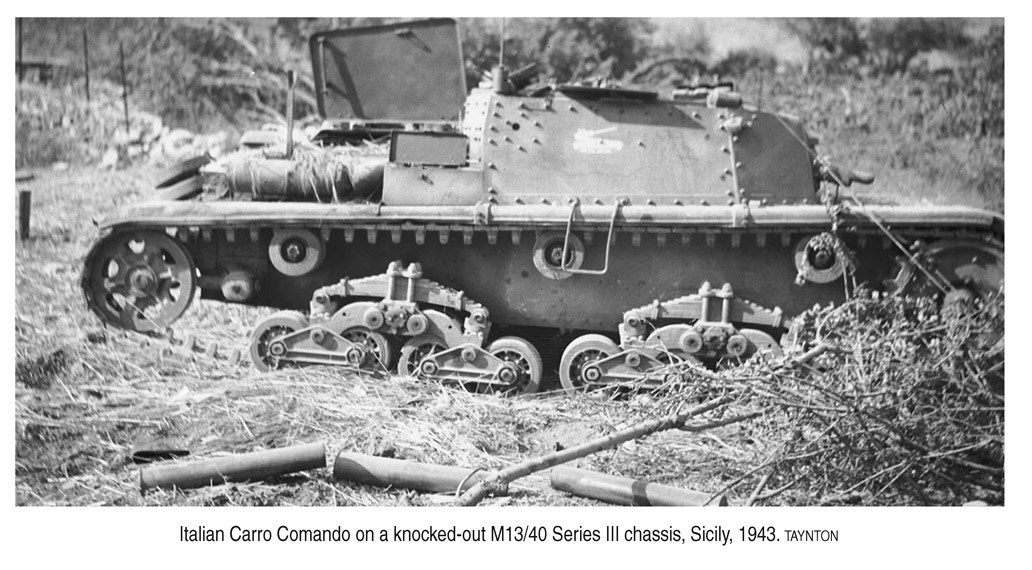
On 20 July, the 70th attacked and took Enna, with Company B taking the lead. Then the battalion attacked northwest to Villapriolo to link up with the 26th Infantry. They reached the Morello River but could not cross as the enemy had blown the bridges. The following day, B Company led an attack on Alimena supported by 36th Infantry Artillery units, the 26th Infantry Regiment, the 1st Engineering Battalion, and Company A 753 Medium Tank Battalion. The town fell, and the force moved on Bompietro the following morning, a town that was heavily defended. Antitank guns and an enemy counterattack slowed the advance. During the pitched battle, artillery was brought up in support and 70th tanks entered the town. Companies A and B took up positions just outside the town to ward off counterattacks by the Germans. The 26th Infantry took a beating while rooting out machine-gun nests and enemy infantry. During this action, five tanks were disabled, seven tankers killed, and five tankers wounded. The 70th withdrew to the area around Alimena to refuel, rearm, and rest.
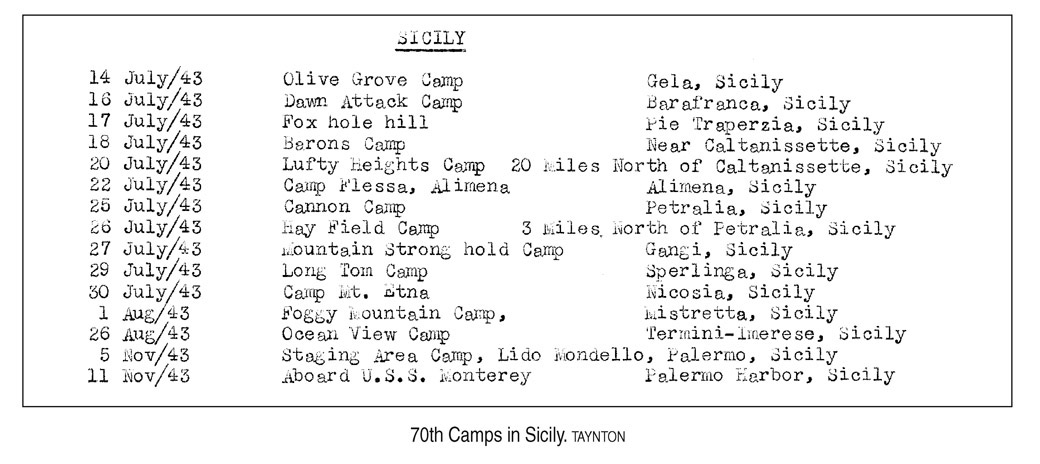
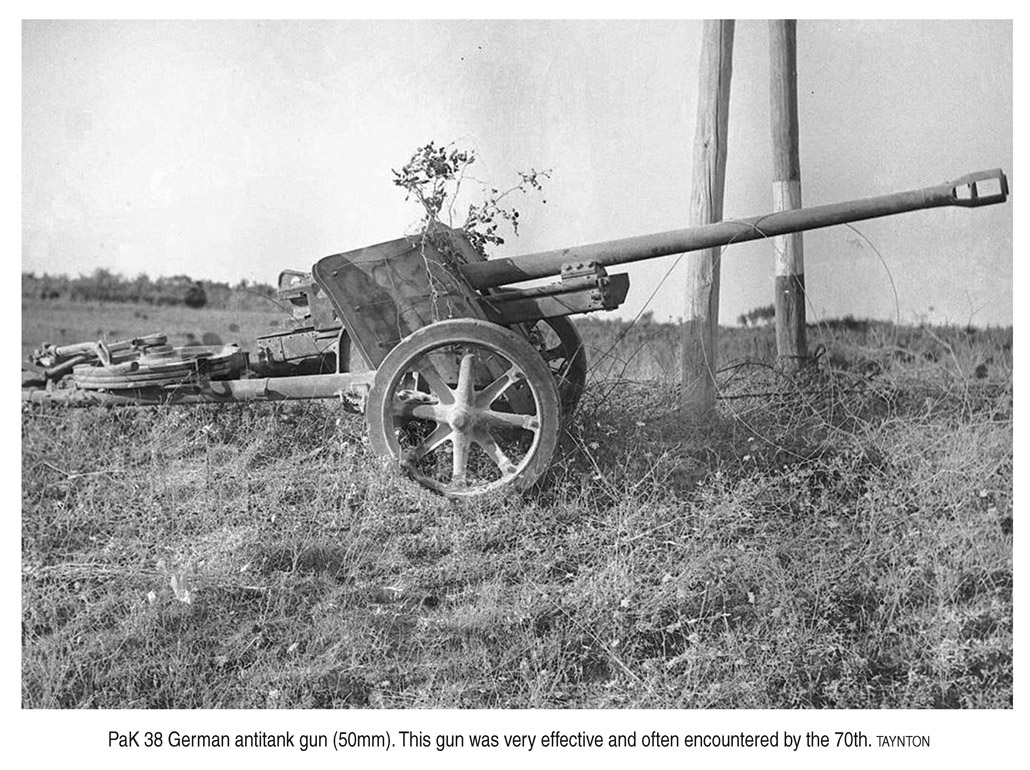
On 22 July, the 70th was ordered to enter enemy territory and secure two bridges over the Acqua Amara River and hold until infantry arrived. This was dangerous, as there would be no infantry protection against enemy infantry-borne antitank weapons. Company B led the attack and, despite severe close-in combat, they took the objective by evening. The Germans were using “sticky bombs,” grenades with an adhesive that allowed infantry to attach it to the hull of a tank.
In the previous thirteen days, the 70th had moved from the Sicilian south coast at Gela to almost the north coast, through mountainous terrain. The enemy was retreating rapidly toward Messina, the last exit to Italy. On 1 August, the 70th moved to bivouac on a mountain about three miles south of Mistretta under occasional attacks by enemy aircraft. Company C was back with the battalion after a stint with the 45th Infantry Division.
The 70th was not involved in any more combat operations in Sicily after 1 August 1943 because the Germans had retreated to Italy across the Strait of Messina. The battalion entered a period of relaxation, training, gunnery practice, and typical camp duties. Tankers performed long-needed vehicle main tenance, and they were even able to view their first movie in months. The battalion cooks made deals with local farmers, and fresh meat and vegetables were available, which was a great improvement over C-rations.
On 26 August, the battalion moved to a camp location just east of Termini Imerese, where they underwent extensive gunnery and tank-operation training through November. Palermo was a popular nearby destination for the tankers. The Italians considered the Americans to be liberators and treated them very well. The tankers of the 70th obtained local building materials and constructed rather elaborate living quarters compared to their standard-issue tents. Intramural sport contests between companies ensued, including volleyball, football, and softball games, as well as track meets and games of horseshoes. The troops were ordered not to fire on enemy aircraft as they were probably landing at the nearby airport to surrender. On 5 November, the battalion moved to a staging area west of Palermo and boarded the USS Monterey, destination England.

